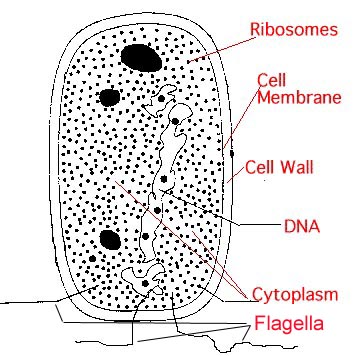
Cells
All living organisms are made up of cells. Just as a brick is the basic unit of structure of a house, a cell is the basic unit of structure of all living things. All organisms consist of one or more cells. New cells can be formed only by the division of existing cells. A plant or animal starts as a single cell and grows by increasing the number of cells. The human body contains approximately 100 trillion cells, most of which are less than a tenth of a millimeter across.
An organism acquires energy by breaking down food within its cells. It then uses this energy to maintain each cell's internal chemical environment, to build organic molecules, to grow, and to reproduce by cell division.
Most cells (excluding bacteria) have three main parts:
1. The cell membrane is a thin but tough covering made of lipids and proteins that forms the outside of the bag. The cell membrane protects the inner contents of the cell, gives the cell shape and supports and controls what goes in and out of the cell.
2. The cytoplasm (means cell substance) contains water, various salts, and many very large molecules. The cytoplasm also contains a variety of smaller subunits or compartments of the cell called organelles which perform various tasks.
3. Ribosomes are where the proteins of the cell are built. RNA is used to carry the plans for the necessary proteins to the ribosomes from the cell's DNA, and there the material of the cell is manufactured so the cell can grow.
4. The cell nucleus houses the cell’s genetic material, DNA and RNA, organized into chromosomes. The genetic material contains directions for making the cell's proteins.
5. Flagella (Latin plural of flagellum) allow the cell to move through water, for example toward food or away from toxins.

material adapted from http://www.contexo.info/DNA_Basics/